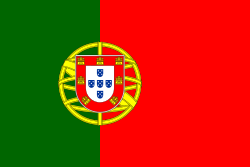Spaniens Grand Prix 1994
| Datum | 29 maj 1994 |
|---|---|
| Bana | Circuit de Catalunya |
| Sträcka | 65 × 4,747 = 308,555 km |
| Vinnare | Damon Hill, Williams-Renault |
| Pole position | Michael Schumacher, Benetton-Ford |
| Snabbaste varv | Michael Schumacher, Benetton-Ford, 1:25,155 |
Spaniens Grand Prix 1994 var det femte av 16 lopp ingående i formel 1-VM 1994.
Resultat
- Damon Hill, Williams-Renault, 10 poäng
- Michael Schumacher, Benetton-Ford, 6
- Mark Blundell, Tyrrell-Yamaha, 4
- Jean Alesi, Ferrari, 3
- Pierluigi Martini, Minardi-Ford, 2
- Eddie Irvine, Jordan-Hart, 1
- Olivier Panis, Ligier-Renault
- Eric Bernard, Ligier-Renault
- Alessandro Zanardi, Lotus-Mugen Honda
- David Brabham, Simtek-Ford
- Martin Brundle, McLaren-Peugeot (varv 59, transmission)
Förare som bröt loppet
- JJ Lehto, Benetton-Ford (varv 53, motor)
- Mika Häkkinen, McLaren-Peugeot (48, motor)
- Johnny Herbert, Lotus-Mugen Honda (41, snurrade av)
- Rubens Barrichello, Jordan-Hart (39, snurrade av)
- Christian Fittipaldi, Footwork-Ford (35, motor)
- David Coulthard, Williams-Renault (32, elsystem)
- Bertrand Gachot, Pacific-Ilmor (32, trasig vinge)
- Gerhard Berger, Ferrari (27, växellåda)
- Gianni Morbidelli, Footwork-Ford (24, bränslesystem)
- Heinz-Harald Frentzen, Sauber-Mercedes (21, växellåda)
- Érik Comas, Larrousse-Ford (19, kylare)
- Ukyo Katayama, Tyrrell-Yamaha (16, motor)
- Michele Alboreto, Minardi-Ford (4, motor)
- Paul Belmondo, Pacific-Ilmor (2, snurrade av)
- Olivier Beretta, Larrousse-Ford (0, motor)
Förare som ej kvalificerade sig
- Andrea Montermini, Simtek-Ford
Noteringar
- David Coulthard och Andrea Montermini gjorde F1-debut.
VM-ställning
Förarmästerskapet
| Konstruktörsmästerskapet
|
| ||||||||
| |||||
Media som används på denna webbplats
The civil ensign and flag of Belgium. It is identical to Image:Flag of Belgium.svg except that it has a 2:3 ratio, instead of 13:15.
Flag of Portugal, created by Columbano Bordalo Pinheiro (1857–1929), officially adopted by Portuguese government in June 30th 1911 (in use since about November 1910). Color shades matching the RGB values officially reccomended here. (PMS values should be used for direct ink or textile; CMYK for 4-color offset printing on paper; this is an image for screen display, RGB should be used.)
The Flag of Europe is the flag and emblem of the European Union (EU) and Council of Europe (CoE). It consists of a circle of 12 golden (yellow) stars on a blue background. It was created in 1955 by the CoE and adopted by the EU, then the European Communities, in the 1980s.
The CoE and EU are distinct in membership and nature. The CoE is a 47-member international organisation dealing with human rights and rule of law, while the EU is a quasi-federal union of 27 states focused on economic integration and political cooperation. Today, the flag is mostly associated with the latter.
It was the intention of the CoE that the flag should come to represent Europe as a whole, and since its adoption the membership of the CoE covers nearly the entire continent. This is why the EU adopted the same flag. The flag has been used to represent Europe in sporting events and as a pro-democracy banner outside the Union.














